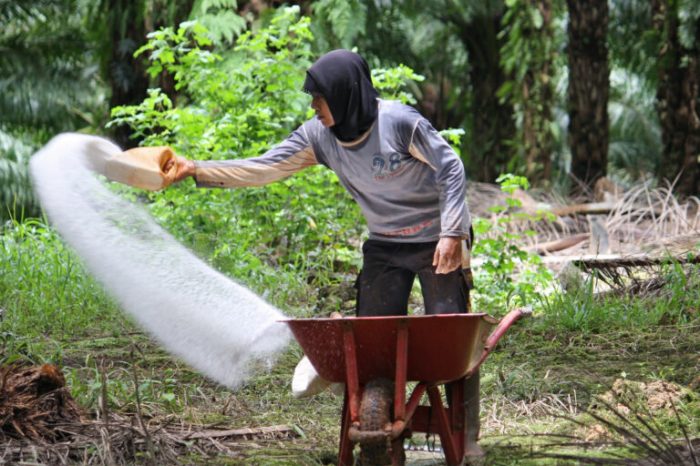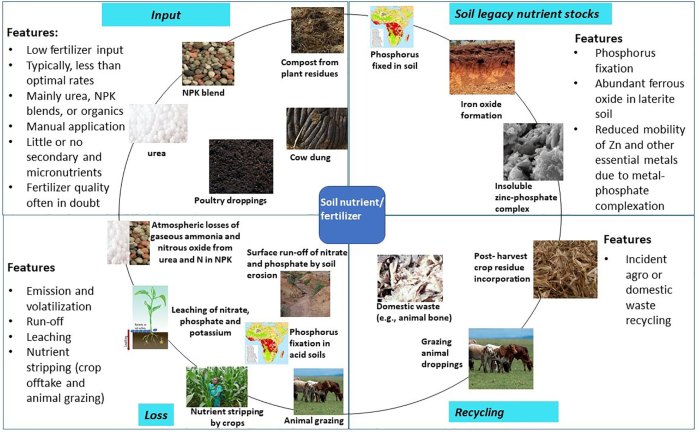
Fertilizer and pesticide solutions are essential components in the realm of agriculture, driving productivity and sustainability. As the demand for food grows, understanding these solutions becomes increasingly important for farmers and consumers alike.
These solutions encompass a wide range of products designed to enhance soil fertility and protect crops from pests and diseases. From organic options that promote ecological balance to synthetic varieties that deliver quick results, the market offers diverse choices tailored to various agricultural needs.
Overview of Fertilizer and Pesticide Solutions

Fertilizer and pesticide solutions play a crucial role in modern agriculture, providing essential nutrients and protection to crops. These solutions help enhance crop yields and maintain plant health, which is vital for feeding the growing global population. Understanding the various types of fertilizers and pesticides available is essential for farmers and agricultural businesses aiming to optimize their productivity.Fertilizer solutions are substances containing essential nutrients like nitrogen, phosphorus, and potassium, which are vital for plant growth.
Pesticide solutions, on the other hand, are chemicals designed to control pests, weeds, and diseases that can harm crops. The importance of these solutions in agriculture cannot be overstated, as they ensure better productivity, healthier plants, and ultimately, a more sustainable agricultural system.
Types of Fertilizers
There are various types of fertilizers available in the market, each catering to different agricultural needs. The primary categories include organic fertilizers, inorganic fertilizers, and slow-release fertilizers. Understanding the advantages and disadvantages of each type can help farmers make informed decisions about their use.
- Organic Fertilizers: Derived from natural sources such as compost, manure, and plant materials, organic fertilizers improve soil structure and enhance microbial activity. However, they typically release nutrients more slowly than chemical options.
- Inorganic Fertilizers: These synthetic fertilizers provide nutrients in a readily available form. They are effective for quick nutrient delivery but may lead to soil degradation if used excessively.
- Slow-Release Fertilizers: Designed to release nutrients gradually over time, these fertilizers reduce the risk of leaching and nutrient loss. However, they may require higher initial costs.
| Type of Fertilizer | Nutrient Content | Advantages | Disadvantages |
|---|---|---|---|
| Organic | Varies (NPK from 1-3-1 to 5-10-5) | Improves soil health, sustainable | Slower nutrient release, potential for pathogens |
| Inorganic | High (NPK typically > 10-10-10) | Fast-acting, easy application | Environmental risk, potential soil degradation |
| Slow-Release | Varies (typically balanced NPK) | Reduces leaching, efficient nutrient use | Higher cost, initial application complexity |
Types of Pesticides

Pesticides can be categorized into several types, including insecticides, herbicides, and fungicides, each targeting specific agricultural threats. Understanding the specific uses of each category is essential for effective pest management.
- Insecticides: Designed to control insect pests that damage crops. Common targets include aphids, beetles, and caterpillars.
- Herbicides: Used to control unwanted weeds that compete with crops for nutrients and water, thereby maximizing crop yield.
- Fungicides: These pesticides target fungal diseases affecting plants, such as powdery mildew and blight.
- Recommended insecticides:
- Pyrethroids: Effective against a wide range of insects.
- Neonicotinoids: Target sucking pests like aphids.
- Recommended herbicides:
- Glyphosate: Broad-spectrum weed control.
- 2,4-D: Used for selective weed control in cereals.
- Recommended fungicides:
- Chlorothalonil: Provides protection against a variety of fungal diseases.
- Azoxystrobin: Effective against leaf spots and blights.
Sustainable Practices in Using Fertilizers and Pesticides
Sustainable agriculture emphasizes practices that minimize environmental impact while maintaining productivity. Eco-friendly alternatives to conventional fertilizers and pesticides are gaining traction as they promote soil health and reduce chemical exposure.Implementing eco-friendly practices can significantly reduce chemical runoff and environmental degradation. Techniques such as crop rotation, integrated pest management (IPM), and organic farming enhance sustainability while promoting biodiversity and soil health.
Business Accounting for Agricultural Solutions
Accurate accounting is essential for managing fertilizer and pesticide expenses in agricultural businesses. Proper tracking of costs associated with these solutions allows for better financial planning and budgeting.Typical costs associated with fertilizers and pesticides include purchase prices, application costs, and transport expenses. Farmers can utilize software solutions to streamline the tracking and reporting of these expenses, ensuring they stay on top of their financial management.
Accounting Payroll in Agriculture
Managing payroll is a significant aspect of agricultural operations, especially when utilizing fertilizers and pesticides. An efficient payroll system ensures that labor costs are managed effectively, allowing farmers to maintain profitability.Common payroll expenses related to agricultural operations may include wages for seasonal labor, overtime pay during peak seasons, and benefits for employees. Keeping track of these costs can aid in optimizing the overall budget for agricultural activities.
Business Advertising for Agricultural Products
Effective advertising strategies are critical for promoting fertilizer and pesticide solutions in the agricultural sector. Utilizing a mix of traditional and digital marketing techniques can help businesses reach their target audiences.Successful advertising campaigns often leverage case studies and testimonials from satisfied farmers to build trust and credibility. Social media platforms play a vital role in this advertising strategy, enabling businesses to engage with potential customers and share valuable information about their products.
Business Agriculture Trends
Current trends in the agricultural industry are heavily influenced by technological advancements and sustainability initiatives. The integration of precision agriculture techniques and data analytics is reshaping how fertilizers and pesticides are applied.Future predictions for the agricultural market suggest a continued focus on sustainable practices and the development of bio-based products that minimize environmental impact. Innovations such as drone technology for pesticide application and soil health monitoring systems are expected to become more prevalent.
Business Ethics in Pesticide Use
Ethical considerations surrounding pesticide use are becoming increasingly important in the agriculture industry. Farmers and businesses must adhere to regulations and compliance standards to ensure responsible pesticide application.Case studies of ethical dilemmas faced by agricultural businesses often highlight the balance between pest control and environmental stewardship. Implementing transparent practices and prioritizing consumer safety are essential components of ethical pesticide use.
Human Resources in Agricultural Businesses
Human resource management plays a crucial role in the effective application of fertilizers and pesticides in agriculture. Proper training for employees on safe handling practices is necessary to ensure compliance with safety regulations.Key HR policies for agricultural businesses should focus on safety training, compliance checks, and ongoing education about new agricultural technologies and practices. Creating an environment that prioritizes worker safety fosters a culture of responsibility and care.
Change Management in Agricultural Practices
Change management is vital when adopting new fertilizer and pesticide technologies. Effective communication strategies are necessary to inform agricultural workers about changes in practices and procedures.Evaluating the success of implemented changes can involve collecting feedback from workers and analyzing crop yield data to determine the impact of new technologies. Continuous improvement is essential in adapting to the evolving agricultural landscape.
Entrepreneurialism in Agricultural Solutions
The fertilizer and pesticide industry presents numerous opportunities for entrepreneurship. Innovative business models focusing on sustainable practices and technology integration are emerging.Aspiring agricultural entrepreneurs can explore a range of resources, including industry networks, educational programs, and financial support from agricultural organizations to launch their ventures successfully.
Furnishings and Supplies for Agricultural Operations
Having the right supplies and equipment is essential for effectively using fertilizers and pesticides in agricultural operations. Quality supplies ensure optimal application and maximize crop yield.A checklist of essential supplies for agricultural businesses may include:
- Application equipment such as sprayers and spreaders
- Protective gear for workers handling chemicals
- Storage facilities for safe chemical containment
- Testing kits for soil and plant health
Outcome Summary
In conclusion, navigating the complexities of fertilizer and pesticide solutions is crucial for anyone involved in agriculture. By leveraging the right products and practices, we can not only improve crop yields but also contribute to a more sustainable food system.
Essential FAQs
What are the primary benefits of using fertilizers?
Fertilizers enhance soil nutrient levels, leading to improved crop growth, higher yields, and better quality produce.
How do pesticides work to protect crops?
Pesticides target and eliminate pests that can harm crops, helping to prevent significant agricultural losses.
Are organic fertilizers as effective as synthetic ones?
While organic fertilizers enhance soil health over time, synthetic options often provide quicker nutrient availability for immediate crop needs.
What are some eco-friendly alternatives to chemical pesticides?
Natural insect repellents, companion planting, and introducing beneficial organisms can serve as effective alternatives to chemical pesticides.
How can farmers reduce chemical runoff when using fertilizers?
Implementing targeted application techniques, maintaining proper soil health, and using buffer zones can significantly reduce chemical runoff.





